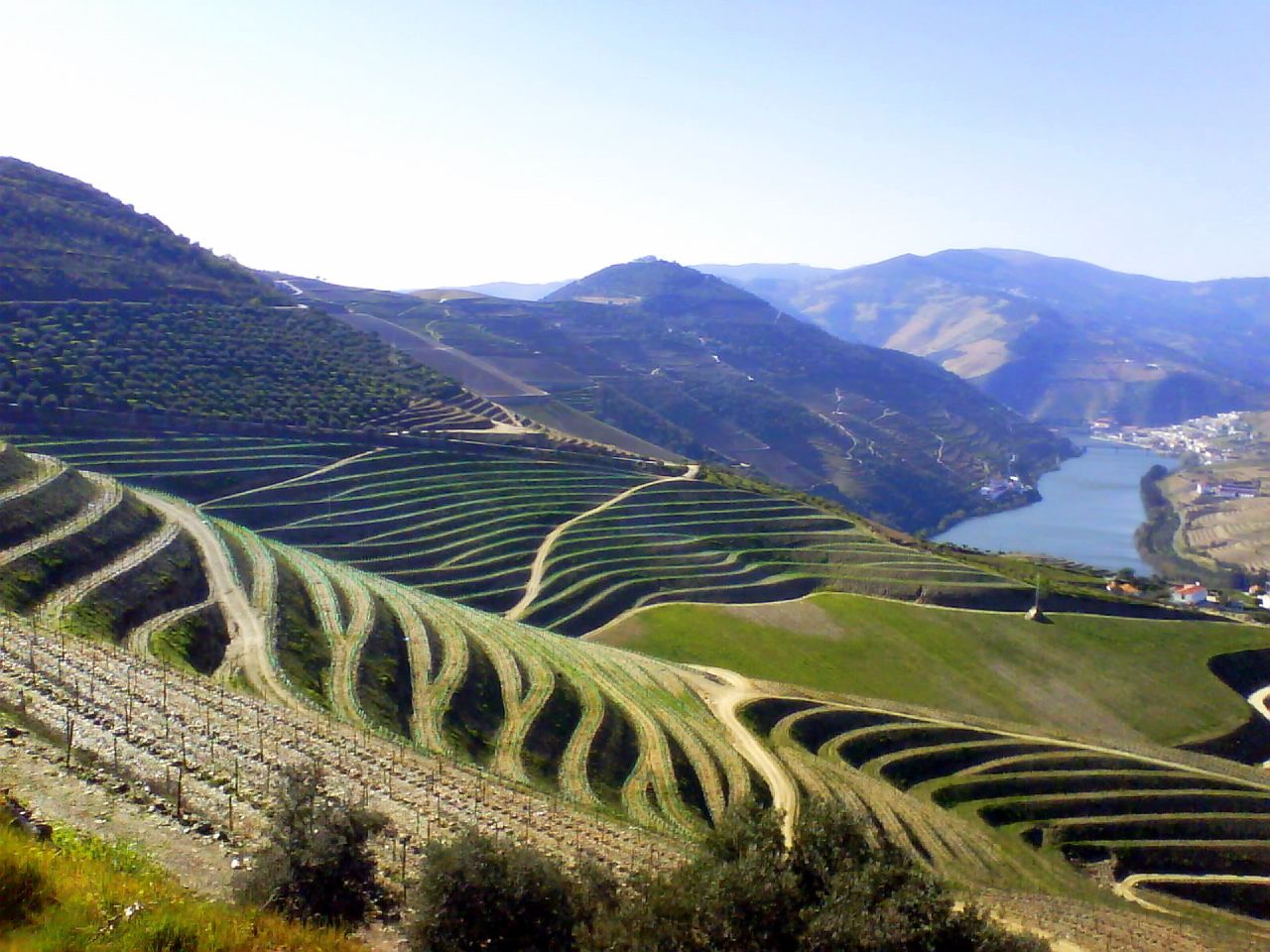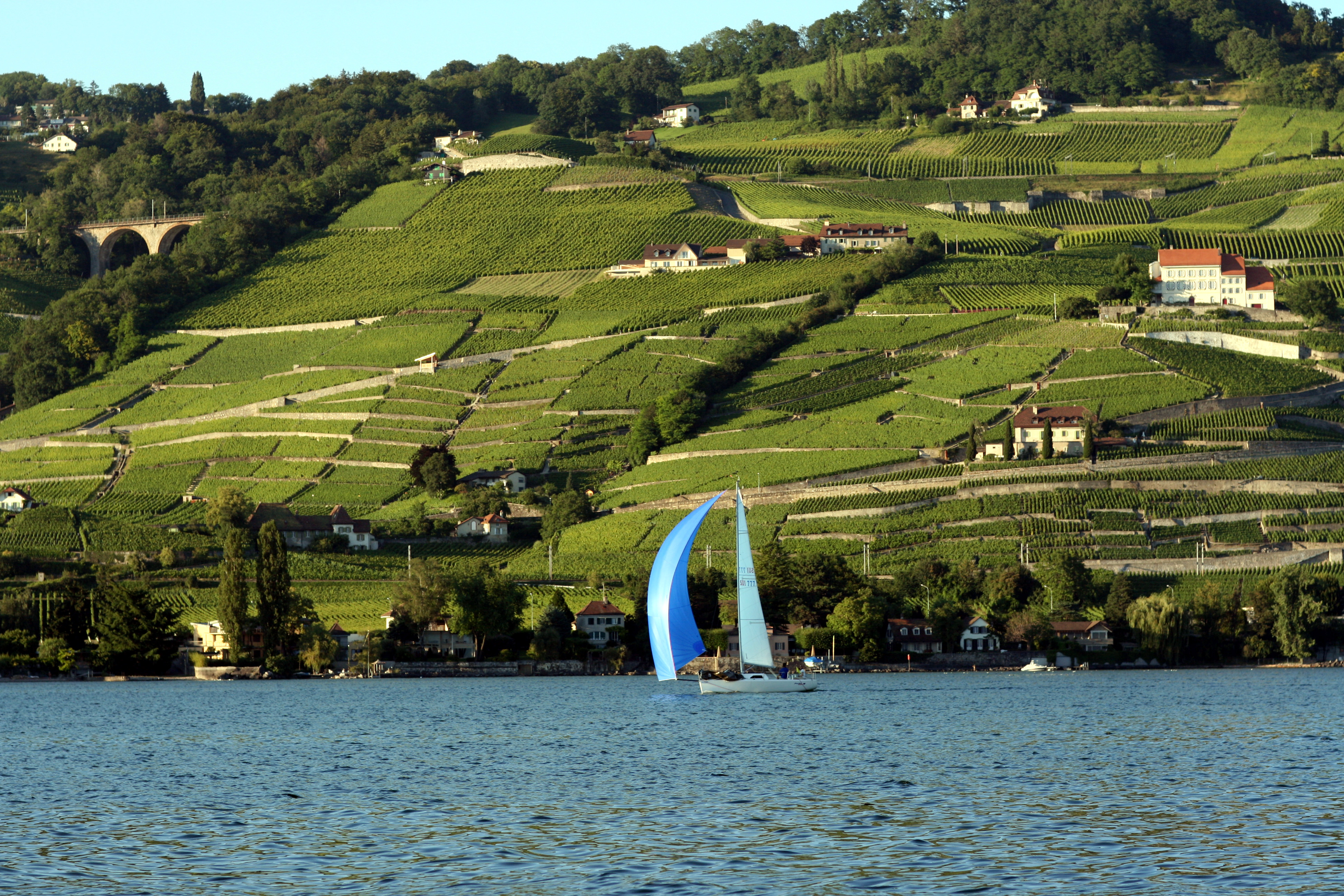|
Saint-Joseph AOC
Saint-Joseph or St.-Joseph is a French wine ''Appellation d'Origine Contrôlée'' (AOC) in the northern Rhône wine region of France. Though the appellation covers the largest amount of land, it is second in actual size under vine to Crozes-Hermitage, an appellation with which it shares much regarding style and prestige. St.-Joseph is primarily a red wine region, but also produces a white wine. The red is produced predominantly from the Syrah grape, but AOC regulations allow up to 10% of Marsanne or Roussanne. The white wine is made exclusively from the latter grape varieties. History Originally known as Vin de Mauves, mentioned in Victor Hugo's Les Misérables, the wine from St.-Joseph was a favourite in the French court of Louis XII (1498–1515) who owned a vineyard in St.-Joseph known as Clos de Tournon. The first official record of vineyards in St. Joseph occurs in 1668. St. Joseph is a saint, (venerated as the protector of scorned husbands, and was the foster father of Jesus ... [...More Info...] [...Related Items...] OR: [Wikipedia] [Google] [Baidu] |
Crozes-Hermitage AOC
Crozes-Hermitage is a French wine ''Appellation d'Origine Contrôlée'' (AOC) in the northern Rhône wine region of France. The appellation is the largest in the northern Rhone, and its wines are less highly regarded than those from the nearby appellations of Côte-Rôtie or its near-namesake Hermitage. Most of the wines produced here are red wines made from the Syrah grape, sometimes blended with small quantities of white Roussanne or Marsanne grapes. Some white wines are also made, based on Marsanne and/or Roussanne.Niels Lillelund: ''Rhône-Vinene'' JP Bøger - JP/Politikens Forlagshus A/S, 2004. , p. 93-96 History In 1846, a panel of tasters commended the wine for its likeness to Hermitage wines. The appellation was officially defined in 1937 and was expanded in 1952.Niels Lillelund: ''Rhône-Vinene'' JP Bøger - JP/Politikens Forlagshus A/S, 2004. , p. 93 Climate and geography Crozes-Hermitage, along with the rest of northern Rhône has a continental climate that differs f ... [...More Info...] [...Related Items...] OR: [Wikipedia] [Google] [Baidu] |
Appellation D'origine Contrôlée
An appellation is a legally defined and protected geographical indication primarily used to identify where the grapes for a wine were grown, although other types of food often have appellations as well. Restrictions other than geographical boundaries, such as what grapes may be grown, maximum grape yields, alcohol level, and other quality factors may also apply before an appellation name may legally appear on a wine bottle label. The rules that govern appellations are dependent on the country in which the wine was produced. History The tradition of wine appellation is very old. The oldest references are to be found in the Bible, where ''wine of Samaria'', ''wine of Carmel'', ''wine of Jezreel'', or ''wine of Helbon'' are mentioned. This tradition of appellation continued throughout the Antiquity and the Middle Ages, though without any officially sanctioned rules. Historically, the world's first exclusive (protected) vineyard zone was introduced in Chianti, Italy in 1716 and th ... [...More Info...] [...Related Items...] OR: [Wikipedia] [Google] [Baidu] |
French Wine
French wine is produced all throughout France, in quantities between 50 and 60 million hectolitres per year, or 7–8 billion bottles. France is one of the largest wine producers in the world, along with Italian, Spanish, and American wine-producing regions. French wine traces its history to the 6th century BCE, with many of France's regions dating their wine-making history to Roman times. The wines produced range from expensive wines sold internationally to modest wines usually only seen within France such as the Margnat wines of the post war period. Two concepts central to the better French wines are the notion of ''terroir'', which links the style of the wines to the locations where the grapes are grown and the wine is made, and the ''Appellation d'origine contrôlée'' (AOC) system, replaced by the Appellation d'Origine Protégée (AOP) system in 2012. Appellation rules closely define which grape varieties and winemaking practices are approved for classification ... [...More Info...] [...Related Items...] OR: [Wikipedia] [Google] [Baidu] |
Mistral (wind)
The mistral ( ca, Mestral, el, Μαΐστρος, it, Maestrale, mt, Majjistral, Corsican: ''Maestrale'') is a strong, cold, northwesterly wind that blows from southern France into the Gulf of Lion in the northern Mediterranean. It produces sustained winds often exceeding , sometimes reaching . It is most common in the winter and spring, and strongest in the transition between the two seasons. Periods of the wind exceeding for more than sixty-five hours have been reported. In France, it refers to a violent, cold, north or northwest wind that accelerates when it passes through the valleys of the Rhône and the Durance Rivers to the coast of the Mediterranean around the Camargue region. It affects the northeast of the plain of Languedoc and Provence to the east of Toulon, where it is felt as a strong west wind. It has a major influence all along the Mediterranean coast of France, and often causes sudden storms in the Mediterranean between Corsica and the Balearic Islands. The ... [...More Info...] [...Related Items...] OR: [Wikipedia] [Google] [Baidu] |
Mediterranean Climate (wine)
In viticulture, the climates of wine regions are categorised based on the overall characteristics of the area's climate during the growing season. While variations in macroclimate are acknowledged, the climates of most wine regions are categorised (somewhat loosely based on the Köppen climate classification) as being part of a Mediterranean (for example Tuscany), maritime (ex: Bordeaux) or continental climate (ex: Columbia ValleyA. Mumma 'The Washington wine difference: it's in the vineyard'' Wines & Vines, November 2005). The majority of the world's premium wine production takes place in one of these three climate categories in locations between the 30th parallel and 50th parallel in both the northern and southern hemisphere.T. Stevenson ''"The Sotheby's Wine Encyclopedia"'' pg 14-15 Dorling Kindersley 2005 While viticulture does exist in some tropical climates, most notably Brazil, the amount of quality wine production in those areas is so small that the climate effect has n ... [...More Info...] [...Related Items...] OR: [Wikipedia] [Google] [Baidu] |
Continental Climate (wine)
In viticulture, the climates of wine regions are categorised based on the overall characteristics of the area's climate during the growing season. While variations in macroclimate are acknowledged, the climates of most wine regions are categorised (somewhat loosely based on the Köppen climate classification) as being part of a Mediterranean (for example Tuscany), maritime (ex: Bordeaux) or continental climate (ex: Columbia ValleyA. Mumma 'The Washington wine difference: it's in the vineyard'' Wines & Vines, November 2005). The majority of the world's premium wine production takes place in one of these three climate categories in locations between the 30th parallel and 50th parallel in both the northern and southern hemisphere.T. Stevenson ''"The Sotheby's Wine Encyclopedia"'' pg 14-15 Dorling Kindersley 2005 While viticulture does exist in some tropical climates, most notably Brazil, the amount of quality wine production in those areas is so small that the climate effect has n ... [...More Info...] [...Related Items...] OR: [Wikipedia] [Google] [Baidu] |
Niels Lillelund
Niels Lillelund (born 1965) is a Danish writer, cultural journalist, op-ed columnist and restaurant critic at Jyllands-Posten. He is the author of several books, among those a series of crime novels about the antiquarian book dealer and ex-policeman Erik Andersen, who is forced to supplement his income as a private detective. The novels introduce very different environments and people. The first novel, ''Rouletten'', takes place in and around a new casino, the first in Denmark. Lillelund worked there for some months before writing his novel. The second, ''Besat til anden side'', is about a management consultant firm, while the third novel, ''Den Amerikanske Samler'' (''The American Collector'') takes us to New York in a hunt for a rare copy of Søren Kierkegaard's ''Either/Or''. These were followed by ''Manden der ville vaere sund'', in which the narrator tries many different methods of improving his health. The latest novel, ''Bibendum'', takes place among wine writers and prod ... [...More Info...] [...Related Items...] OR: [Wikipedia] [Google] [Baidu] |
Guigal
Guigal, formally ''Établissements Guigal'', is a winery and négociant business situated in Ampuis in the southern part of the Rhône region in France. Guigal produces wine from appellations across the Rhône region, but is particularly noted for their Côte-Rôtie wines and played a pioneering role in improving Côte-Rôtie's international reputation. Guigal's single vineyard wines ''La Mouline'', ''La Landonne'' and ''La Turque'' (sometimes referred to collectively as "La La's") are internationally renowned. In 2007, the release of the 2003 vintage of Guigal's "La La" wines set the record for most expensive release of any Rhone wine, with bottles retailing for as much as $800.J. Molesworth 'Guigal Sets Price Record for Rhône'' Wine Spectator, Feb 8th, 2007 History Guigal was established in 1946 by Étienne Guigal, who had worked for Vidal Fleury for 15 years before setting up his own business. It has been managed by his son Marcel Guigal since 1961. In 1984, Guigal bought ... [...More Info...] [...Related Items...] OR: [Wikipedia] [Google] [Baidu] |
Red Wine
Red wine is a type of wine made from dark-colored grape varieties. The color of the wine can range from intense violet, typical of young wines, through to brick red for mature wines and brown for older red wines. The juice from most purple grapes is greenish-white, the red color coming from anthocyan pigments present in the skin of the grape. Much of the red wine production process involves extraction of color and flavor components from the grape skin. Varieties The top 20 red grape varieties by acreage are: * Alicante Henri Bouschet * Barbera * Bobal * Cabernet Franc * Cabernet Sauvignon * Carignan * Cinsaut * Malbec * Douce noir * Gamay * Grenache * Isabella * Merlot * Montepulciano * Mourvèdre * Rose * Pinot noir * Sangiovese * Syrah * Tempranillo * Zinfandel The top 21—50 red grape varieties by acreage are: * Aglianico * Blaufränkisch * Bordô * Carménère * Castelão * Concord * Corvina Veronese * Criolla Grande * Croatina * Dolcetto * Dornfelder * ... [...More Info...] [...Related Items...] OR: [Wikipedia] [Google] [Baidu] |
Rhône (wine Region)
The Rhône ( , ; wae, Rotten ; frp, Rôno ; oc, Ròse ) is a major river in France and Switzerland, rising in the Alps and flowing west and south through Lake Geneva and southeastern France before discharging into the Mediterranean Sea. At Arles, near its mouth, the river divides into the Great Rhône (french: le Grand Rhône, links=no) and the Little Rhône (). The resulting delta forms the Camargue region. The river's source is the Rhône Glacier, at the east edge of the Swiss canton of Valais. The glacier is part of the Saint-Gotthard Massif, which gives rise to three other major rivers: the Reuss, Rhine and Ticino. The Rhône is, with the Po and Nile, one of the three Mediterranean rivers with the largest water discharge. Etymology The name ''Rhône'' continues the Latin name (Greek ) in Greco-Roman geography. The Gaulish name of the river was or (from a PIE root *''ret-'' "to run, roll" frequently found in river names). Names in other languages include german: Rh ... [...More Info...] [...Related Items...] OR: [Wikipedia] [Google] [Baidu] |
Appellation D'Origine Contrôlée
An appellation is a legally defined and protected geographical indication primarily used to identify where the grapes for a wine were grown, although other types of food often have appellations as well. Restrictions other than geographical boundaries, such as what grapes may be grown, maximum grape yields, alcohol level, and other quality factors may also apply before an appellation name may legally appear on a wine bottle label. The rules that govern appellations are dependent on the country in which the wine was produced. History The tradition of wine appellation is very old. The oldest references are to be found in the Bible, where ''wine of Samaria'', ''wine of Carmel'', ''wine of Jezreel'', or ''wine of Helbon'' are mentioned. This tradition of appellation continued throughout the Antiquity and the Middle Ages, though without any officially sanctioned rules. Historically, the world's first exclusive (protected) vineyard zone was introduced in Chianti, Italy in 1716 and th ... [...More Info...] [...Related Items...] OR: [Wikipedia] [Google] [Baidu] |
Roussanne
Roussanne is a white wine grape grown originally in the Rhône wine region in France, where it is often blended with Marsanne. It is the only other white variety, besides Marsanne, allowed in the northern Rhône appellations of Crozes-Hermitage AOC, Hermitage AOC and Saint-Joseph AOC. In the southern Rhône appellation of Châteauneuf-du-Pape AOC it is one of six white grapes allowed, where it may be blended into red wines. Roussanne is also planted in various wine-growing regions of the New World, such as California, Washington, Texas, South Africa and Australia as well as European regions such as Crete, Tuscany and Spain. The berries are distinguished by their russet color when ripe—''roux'' is French for the reddish-brown color ''russet'', and is probably the root for the variety's name. The aroma of Roussanne is often reminiscent of a flowery herbal tea. In warm climates, it produces wines of richness, with flavors of honey and pear, and full body. In cooler climates ... [...More Info...] [...Related Items...] OR: [Wikipedia] [Google] [Baidu] |




.jpg)
